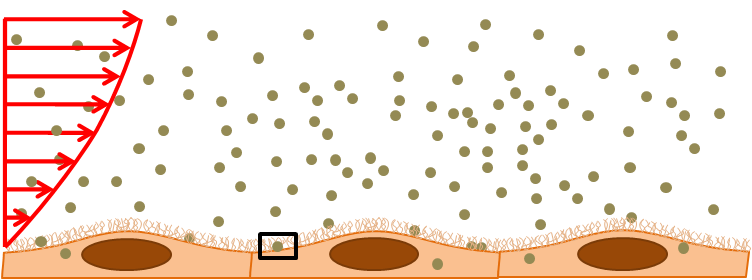 Elasto-capilly instability of mitochondria. Together with Julien Husson from Ecole Polytechnique, we have worked on several cell mechanics questions. Julien has developed new microindentation techniques to apply nanonewton-range forces to adherent cells. He applied these techniques to induce controlled mitochondrial fission in endothelial cells due to force-induced membrane rupture. We proposed that mitochondrial fission can be described as an elasto-capillary mechanical instability, which resembles the Plateau-Rayleigh instability of liquid jets. Our stability analysis successfully explains the observed fission wavelength and the experimental observation that mitochondria beyond a critical length tend to fission.
Elasto-capilly instability of mitochondria. Together with Julien Husson from Ecole Polytechnique, we have worked on several cell mechanics questions. Julien has developed new microindentation techniques to apply nanonewton-range forces to adherent cells. He applied these techniques to induce controlled mitochondrial fission in endothelial cells due to force-induced membrane rupture. We proposed that mitochondrial fission can be described as an elasto-capillary mechanical instability, which resembles the Plateau-Rayleigh instability of liquid jets. Our stability analysis successfully explains the observed fission wavelength and the experimental observation that mitochondria beyond a critical length tend to fission.
 Dynamics of nanoparticle internalization.With Abdul Barakat and his team at Ecole Polytechnique, I have worked on modeling biomedical strategies (nanoparticles and stents) to treat atherosclerosis. We developed a theoretical model to understand the influence of nanoparticle characteristics, of cell mechanical properties, and of arterial flow on nanoparticle internalization efficiency.
Dynamics of nanoparticle internalization.With Abdul Barakat and his team at Ecole Polytechnique, I have worked on modeling biomedical strategies (nanoparticles and stents) to treat atherosclerosis. We developed a theoretical model to understand the influence of nanoparticle characteristics, of cell mechanical properties, and of arterial flow on nanoparticle internalization efficiency.
 Cellular dewetting. With the team of Emmanuel Lemichez at University of Nice, and in collaboration with Caroline Stefani, Madhavi Maddugoda, Patricia Bassereau, Françoise Brochard-Wyart and others, we identified and described a new biophysical phenomenon that we termed cellular dewetting. When endothelial cells are infected with certain bacterial toxins, their actin cytoskeleton loses integrity, leading to the opening of transcellular tunnels. This phenomenon resembles the dewetting of a thin ultra-viscous liquid film on a hydrophobic surface. By exploiting this analogy, we have explained the statics and dynamics of cell dewetting as an interplay between membrane tension, line tension and friction with the substrate.
Cellular dewetting. With the team of Emmanuel Lemichez at University of Nice, and in collaboration with Caroline Stefani, Madhavi Maddugoda, Patricia Bassereau, Françoise Brochard-Wyart and others, we identified and described a new biophysical phenomenon that we termed cellular dewetting. When endothelial cells are infected with certain bacterial toxins, their actin cytoskeleton loses integrity, leading to the opening of transcellular tunnels. This phenomenon resembles the dewetting of a thin ultra-viscous liquid film on a hydrophobic surface. By exploiting this analogy, we have explained the statics and dynamics of cell dewetting as an interplay between membrane tension, line tension and friction with the substrate.